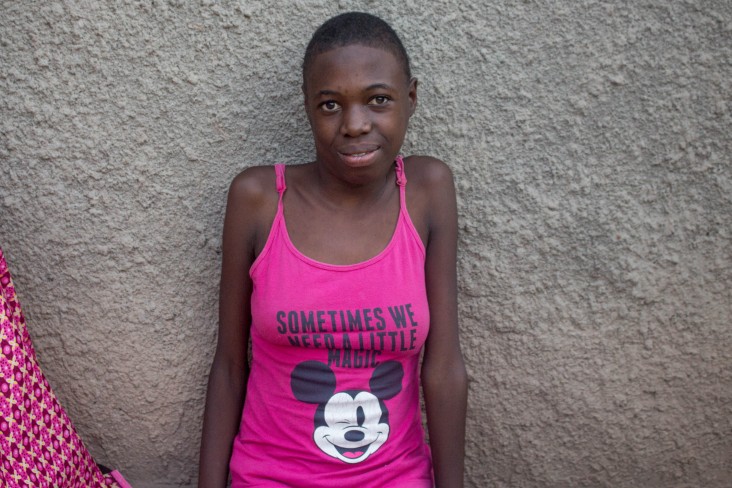Speeches Shim

Rita is a teenage girl in southwest Uganda who has been living with HIV since birth. Both her parents died from AIDS-related illnesses. But with the support of her grandmother, Rita has adhered well to her prescribed antiretroviral (ARV) medication, which treats HIV. She was thriving—until a terrible cough started.
Grandmother Betty was puzzled by Rita’s cough, rapid weight loss, and swollen lymph nodes. She asked Rita to sit in the sun on the top of a hill every day in hope that the warmth would improve her health. But Rita just got sicker.
Health workers at local clinics were unable to diagnose the cause of the illness. They believed that Rita’s health problems were related to her ARVs—perhaps she was suffering because of poor adherence to medication. Rita and her grandmother knew that that was not the case. They eventually found money and hired a motorcycle taxi to transport Rita to Rwashamaire Health Center IV, which is supported through the USAID RHITES-SW project.
“We didn’t know if Rita would make it,” says Sister Marion Nahabwe, the vector control officer. “She was so thin, and could barely breathe.”
Upon initial inspection, these health workers also believed that Rita’s illness was related to her failure to take her ARVs. “However, because we had been trained to diagnose and treat HIV/TB co-infection, nurses on the wards were quick to request a tuberculosis (TB) test before any ARVs adjustments were considered,” says Marion. A sample was sent for testing with GeneXpert, which is an effective TB test that can also identify drug-resistant TB.
Rita tested positive for TB. Rita is one of the many patients who are co-infected with HIV and TB—and misdiagnosed.
Her grandmother cried with relief when the result came out. While TB is potentially fatal if untreated, a medication regimen can usually cure it if caught in time. The clinicians made sure that Rita’s grandmother was also tested. This is known as contact tracing, whereby all people who may have come into contact with the patient are found and tested in order to stop the spread of the disease. Rita’s grandmother tested negative.
Rita has since become a favorite client at the health center, says Sister Marion. “She was strong-willed, and we all wanted her to make it. We made sure she got nutrition therapy to help build her strength up. She was already sleeping under a net to protect her from getting malaria.”
Rita is one of the 439 HIV/TB co-infected children and youth who have been identified and treated through the support of the USAID RHITES- SW project since 2015. Rita is feeling better. She looks forward to returning to school and helping out her grandmother take care of their garden and home.
Ntungamo district, where Rita lives, has one of the highest number of drug-resistant TB cases and lowest case detection levels in the region. The World Health Organization ranks Uganda among the 30 TB/HIV high-burden countries. It is estimated that about 45% of TB patients are co-infected with HIV/AIDS. TB is the number one killer of HIV/AIDS patients.
The USAID Regional Health Integration to Enhance Services in South West Uganda (RHITES-SW) project remains at the forefront of the battle against TB in southwest Uganda. Working with the Ministry of Health, it is strengthening diagnosis and treatment skills of health workers to save the lives of co-infected individuals. The project supports 253 TB diagnostic and treatment units, and has increased access to effective TB testing using the GeneXpert from 4,254 In 2015 to 51,203 in 2019. To date the project has also strengthened staff skills and supports the use of the GeneXpert in 26 sites. In order to increase access to effective TB testing in rural areas especially health centers located in far to reach places, the project set up a network of 29 motorcycle transporters who pick up samples from over 250 sites and take them for testing at GeneXpert hubs.

Comment
Make a general inquiry or suggest an improvement.